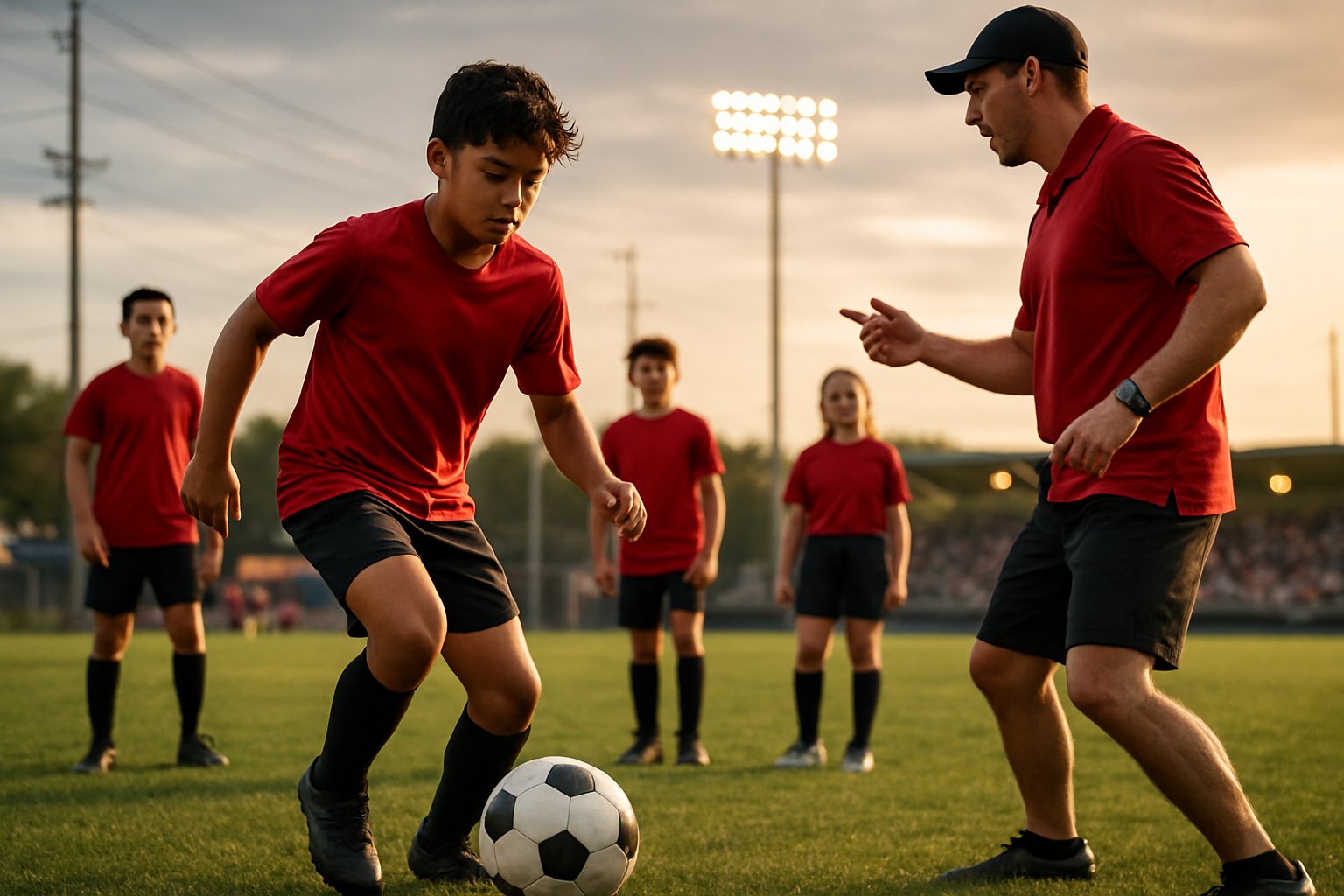Youth development pathways in organized athletics
This article outlines how young people progress through organized athletics, highlighting structured training, coaching, competition formats, and community support. It previews practical elements including conditioning, nutrition, recovery strategies, the role of analytics, and how events and local services contribute to long-term athlete development.

Youth development pathways in organized athletics focus on staged learning, gradual increases in training load, and coordinated competitive experiences that match physical and psychological maturity. Programs emphasize foundational movement skills, injury prevention, and enjoyment to maintain engagement while introducing sport-specific techniques as young people progress. Effective pathways balance measurable conditioning benchmarks with coaching that supports social development, teamwork, and resilience, creating opportunities for athletes to refine performance while preserving long-term well-being and continued participation.
How does training influence athlete development?
Age-appropriate training begins with broad physical literacy—balance, coordination, and basic endurance—before moving into specialized skill work. Progressive periodization ensures athletes develop aerobic and anaerobic capacity, muscular strength, and sport-specific technical ability without sudden spikes in load that increase injury risk. Cross-training and multi-sport participation are often recommended early to build adaptable movement patterns. Coaches use conditioning metrics and subjective feedback to pace progression, ensuring that increased competition and training intensity align with physical maturation and individual readiness.
What role does coaching play in progression?
Coaching provides technical instruction, tactical frameworks, and motivational support that shape an athlete’s trajectory. Effective coaches emphasize feedback that is clear, actionable, and tailored to developmental stage, while fostering a positive environment that prioritizes learning over short-term results. Coaching also includes planning training cycles, coordinating with strength and conditioning staff, and liaising with parents and schools to manage workload. Through mentorship, coaches support psychological skills such as focus, confidence, and goal-setting that underpin sustained improvement in competition settings.
How does teamwork affect performance and growth?
Teamwork cultivates communication, trust, and shared responsibility—skills that transfer to individual performance and collective outcomes. In team environments, athletes learn to adapt roles, provide peer feedback, and manage interpersonal dynamics under pressure. Cooperative drills, small-sided games, and leadership rotations help develop decision-making and tactical awareness. For individual-sport athletes, training groups and relays offer comparable social benefits, promoting motivation, consistency in attendance, and the development of healthy competitive habits that support long-term performance trajectories.
How do nutrition and recovery support endurance?
Nutrition and recovery underpin the capacity to train, compete, and adapt. Appropriate caloric intake, balanced macronutrients, and hydration strategies support day-to-day energy needs and endurance during events. Recovery practices—quality sleep, periodized rest, active recovery sessions, and targeted mobility work—help tissue repair and reduce overuse injuries. Young athletes benefit from age-specific guidance and should consult qualified practitioners for individualized plans. This article is for informational purposes only and should not be considered medical advice. Please consult a qualified healthcare professional for personalized guidance and treatment.
How do competition, events, and stadiums shape experience?
Competition exposes athletes to variable intensity, tactical scenarios, and psychological demands that training alone cannot replicate. Age-group leagues, regional events, and staged tournaments provide escalating challenges while teaching event preparation, time management, and coping strategies for travel and unfamiliar venues. Participation in larger stadiums or events with broadcasting elements may introduce additional stressors; careful exposure helps athletes adapt. Organizers and coaches should coordinate calendars to avoid congested event schedules and preserve recovery windows between competitions.
How are conditioning and analytics applied for athletes?
Conditioning programs target sport-specific energy systems—speed work, interval training, and strength phases—to improve measurable aspects of performance. Analytics, from simple time trials to wearable workload monitoring and video analysis, inform individualized adjustments to training volume and intensity. When combined with coach observation and athlete-reported wellness metrics, analytics help identify plateaus, injury risk, and opportunities for targeted intervention. The goal is to use data to support development decisions without undermining athlete autonomy or creating undue pressure.
Conclusion
Youth pathways in organized athletics work best when they integrate progressive training, skilled coaching, thoughtful competition, and supports for nutrition and recovery. Conditioning and analytics can refine progress, while teamwork and local community services provide essential environments for growth. Emphasizing health, balanced progression, and positive experiences increases the likelihood that young athletes will develop sustainably and remain engaged in sport over the long term.





